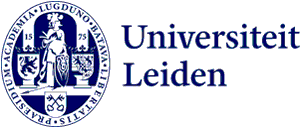CJ Public Lecture: What is happening around Europe’s internal borders?
At the Criminal Justice Public Lecture on 20 April, Professor of Law and Society Maartje van der Woude spoke about her research into decisions and practice in relation to intra-Schengen border areas and the free movement of persons. The thinking behind the Schengen area is that where the external borders are strictly controlled, border controls within the area do not have to be carried out. But what actually happens around those internal borders?

Shortly after the Schengen area was introduced, concerns were already raised in European politics about the impact of the zone on mobility, Van der Woude said. Yet the dominant thinking was that with strict controls at the external borders, the internal borders needed little attention.
Nevertheless, the free movement of persons within the Schengen area has often come under pressure. Van der Woude gave three reasons for this. The first was the increased influx of migrants from Europe which started with the Arab Spring in 2011. By 2015 this influx had reached a peak, with more than 1.8 million migrants entering Europe. This led to concerns about the free movement of persons within the Schengen area.
The second reason given by Van der Woude were the terrorist attacks on European soil starting in 2015. The spike in asylum applications was used to place IS cells in Europe. Migration, security and cross-border crime continue to be linked in the political debate, creating a stereotype. Van der Woude argued that this link sometimes arises between causality. A Europol statistic from 2021 shows how ethno-nationalist and separatist terrorism has been dominant since 2018. Van der Woude asks the important question: what is considered terrorism? Jihadism still seems to be the dominant image of terrorism, though this is no longer accurate.
The third reason Van der Woude gave was Covid-19. Suddenly many borders were closed. Some policymakers used the pandemic as an excuse to implement anti-immigration policies.
Paradox of open borders
Van der Woude would like to paint a more realistic picture of the internal borders of the Schengen area. Her research notes that Europe’s internal borders were never intended to be completely removed, nor have they ever been. For some people, it is easy to cross these borders, but for others far more controls are carried out. She calls this the paradox of open borders; there are opportunities for the economy, but there can be possible security risks because control is literally lost. The freedom of some (groups of) people is more high-risk than that of others.
In response to this paradox, many countries have found options and possibilities to circumvent the Schengen Borders Code (SBC) and its limitations. Indeed, Article 23 SBC provides an opportunity to circumvent the other articles. Although free movement of persons applies, countries around the specific border may carry out checks as long as these are not aimed at border control. However, this article does not specify what must be done so that checks do not resemble border controls.
Van der Woude concluded her lecture by reflecting on the current situation at the internal borders of the Schengen area. The control of border mobility is motivated by a number of things, namely national security fears, national identity and sovereignty, and welfare chauvinism. According to Van der Woude, there is general lack of true solidarity.
The final Criminal Justice Public Lecture of this academic year will be held on 1 June and will be given by Maarten Kunst (in Dutch). The topic of the lecture is the right of victims to speak in criminal cases.
Tekst and photo: Catherine Vroon
